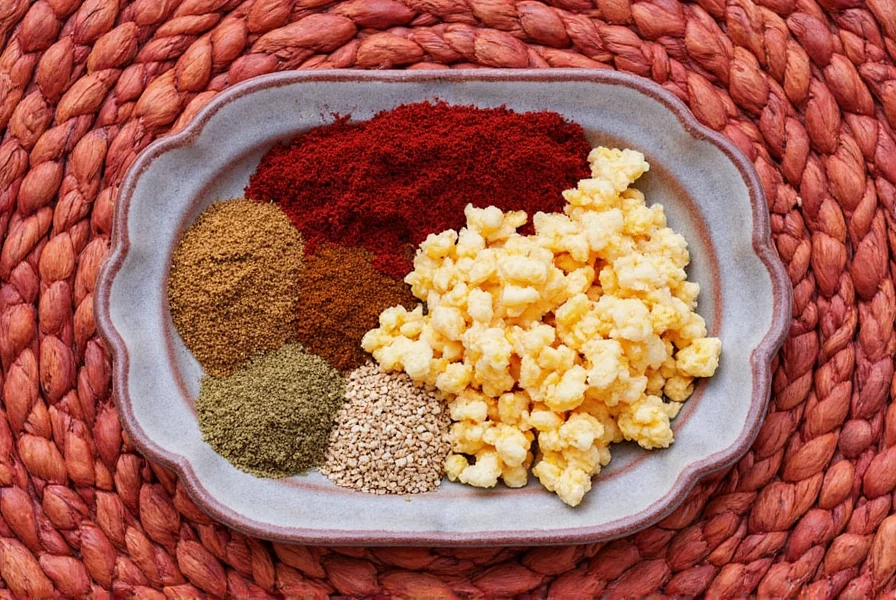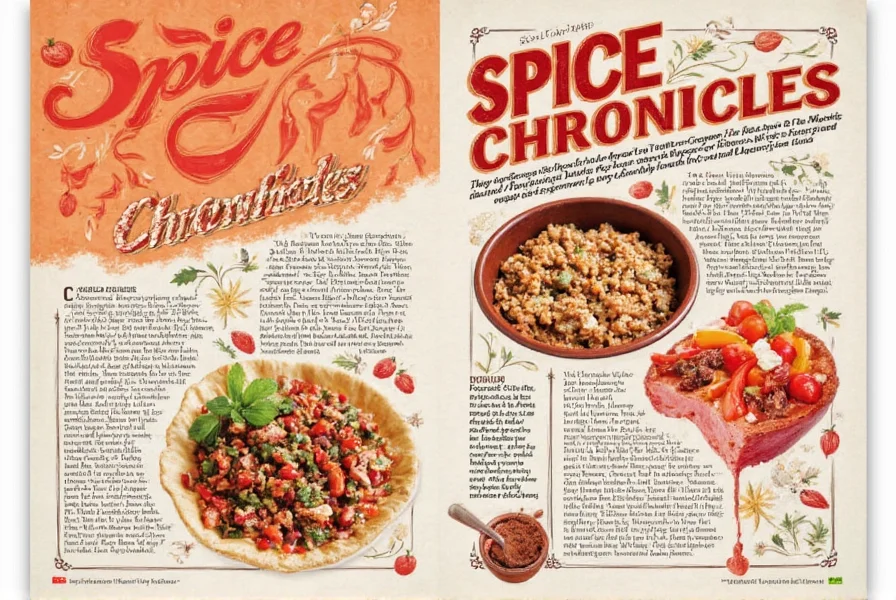Spice Chronicles: How Mexican History of Food Shaped the World’s Tastiest Traditions
Welcome to the vibrant world of Mexican spice traditions, where every bite tells a story steeped in centuries of cultural fusion and fiery flavor. In this article, we'll explore how the Mexican history of food evolved through indigenous ingredients, colonial influence, and modern culinary innovation. Whether you're a seasoned chef or just starting your spice journey, this post promises a delicious dive into one of the world's most celebrated cuisines.
Table of Contents
- The Ancient Roots of Mexican Cuisine
- Key Spices That Define Mexican Flavor
- Colonial Influence and Spice Trade
- Modern Mexican Cooking: Fusion and Innovation
- Buying Guide: Must-Have Mexican Spices
- Conclusion: The Global Impact of Mexican Spice Traditions
The Ancient Roots of Mexican Cuisine
Mexico’s rich culinary heritage began with its indigenous peoples — the Olmecs, Mayans, and Aztecs — who cultivated some of the world’s most iconic ingredients long before European contact. Maize (corn), beans, squash, chili peppers, cacao, and tomatoes formed the backbone of ancient Mesoamerican diets. But it was the chili pepper that truly brought heat and personality to their dishes.

The Aztecs used chili peppers not only for flavor but also for medicinal purposes. They ground them into pastes, combined them with tomatoes and herbs, and used them to preserve meats. This early use of spice laid the foundation for what would become one of the world's most beloved culinary traditions.
The Role of Cacao and Vanilla
Cacao played a sacred role in Aztec society, often consumed as a bitter, spiced beverage mixed with chili, water, and sometimes honey. Vanilla, native to Mexico, was another prized ingredient that eventually traveled the globe. These two items alone helped define early Mexican cuisine as both functional and indulgent.
Key Spices That Define Mexican Flavor
Today, Mexican cuisine is known for its bold flavors, thanks largely to a unique set of spices that have stood the test of time. Here are the top five spices that define Mexican cooking:
- Ancho Chili Powder – Sweet and smoky, made from dried poblano peppers
- Guajillo Chili – Mild heat with a fruity undertone
- Cumin – Earthy and essential in taco seasonings
- Oregano (Mexican Style) – More pungent than Mediterranean oregano
- Coriander – Adds citrusy brightness to salsas and marinades
| Spice | Heat Level | Flavor Profile | Common Use |
|---|---|---|---|
| Ancho Chili Powder | Mild to Medium | Smoky, raisin-like | Tamales, moles, enchiladas |
| Guajillo Chili | Medium | Fruity, tangy | Salsas, adobo sauces |
| Cumin | No Heat | Earthy, nutty | Ground meat dishes, tacos al pastor |
| Mexican Oregano | No Heat | Bold, floral | Bean dishes, soups, stews |
| Coriander Seeds | No Heat | Citrusy, sweet | Salsas, marinades, pickling |
Practical Tip: Building Your Mexican Spice Rack
If you’re new to Mexican cooking, start with these core spices:
- Chili powder blend (store-bought or homemade)
- Dried whole chilies (ancho, guajillo, pasilla)
- Ground cumin
- Mexican oregano
- Coriander seeds or ground coriander
Colonial Influence and Spice Trade
When Spanish conquistadors arrived in the 1500s, they brought new ingredients that transformed traditional Mexican dishes. Herbs like cilantro and spices like black pepper, cinnamon, and cloves were introduced. The blending of Old World and New World ingredients gave birth to iconic dishes like mole, tamales, and even early versions of tacos.

The spice trade connected Mexico to global markets, allowing native ingredients like vanilla and chili to reach kitchens across Europe and Asia. In return, European spices became integrated into local dishes, enriching the complexity of Mexican flavor profiles.
The Birth of Mole
Mole, a complex sauce made with chocolate, chilies, nuts, and spices, is a perfect example of colonial-era fusion. Originally developed by nuns in Puebla, mole represents the harmony of indigenous and Spanish influences. It remains a staple at celebrations and festivals across Mexico today.
Modern Mexican Cooking: Fusion and Innovation
Fast forward to the 20th and 21st centuries — Mexican cuisine has gone global. From street tacos in Los Angeles to high-end mole in Michelin-starred restaurants, Mexican chefs are redefining what it means to cook with spice.

Chefs like Enrique Olvera and Gabriela Cámara have elevated Mexican cooking by highlighting regional diversity and authenticity. Street foods like elote (grilled corn) and tlacoyos (stuffed corn cakes) now appear on trendy menus worldwide, while home cooks embrace the versatility of Mexican spices.
Top 3 Ways to Modernize Mexican Flavors
- Use smoked paprika in place of chipotle for a subtle smokiness
- Add a dash of espresso to deepen the richness of mole sauces
- Experiment with tropical fruits like mango or pineapple in salsas
Buying Guide: Must-Have Mexican Spices
Whether you’re shopping online or at a local market, here’s a breakdown of must-have Mexican spices and products to keep in your kitchen:
| Product | Features | Advantages | Best For | Recommended Brands |
|---|---|---|---|---|
| Whole Dried Chilies | Varying heat levels; versatile for grinding or soaking | Authentic flavor; longer shelf life | Making sauces, salsas, marinades | La Costeña, El Yaque |
| Chili Powder Blend | Premixed seasoning with cumin, garlic, and chili | Convenient for quick recipes | Ground meat dishes, taco seasoning | Mrs. Dash, Badia |
| Mexican Oregano | Stronger aroma and flavor than Mediterranean oregano | Enhances soups, bean dishes, and grilled meats | Traditional stews and sauces | Goya, Simply Organic |
| Vanilla Beans | Rich, natural aroma from native Mexican orchids | Better quality than imitation extracts | Desserts, beverages, baking | Madagascar Pure, Nielsen-Massey |
| Coriander Seeds | Can be toasted and ground for custom blends | Adds depth to spice mixes and pickling brines | Salsas, marinades, tacos | Frontier Co-op, McCormick |
Pro Tips for Buying and Storing Mexican Spices
- Buy whole spices when possible — they retain flavor longer
- Store spices in airtight containers away from light and moisture
- Grind your own chili powders for fresher, more vibrant taste
- Label your containers clearly with purchase dates

Conclusion: The Global Impact of Mexican Spice Traditions
From ancient civilizations to modern culinary artistry, the Mexican history of food offers a powerful testament to how spice can shape identity, culture, and community. The enduring legacy of chili peppers, cacao, vanilla, and other native ingredients continues to inspire chefs and home cooks around the world.
So next time you savor a plate of tacos al pastor or drizzle mole over your chicken, remember — you’re tasting hundreds of years of history, innovation, and passion. Embrace the heat, enjoy the flavor, and let the spirit of Mexican spice guide your culinary adventures!











 浙公网安备
33010002000092号
浙公网安备
33010002000092号 浙B2-20120091-4
浙B2-20120091-4